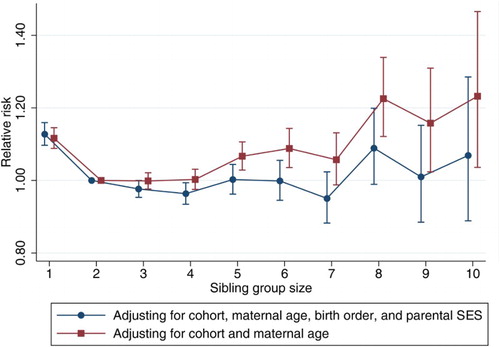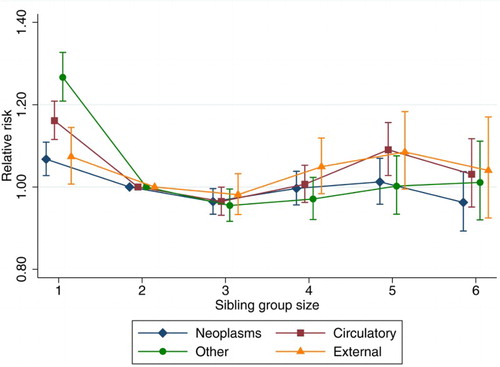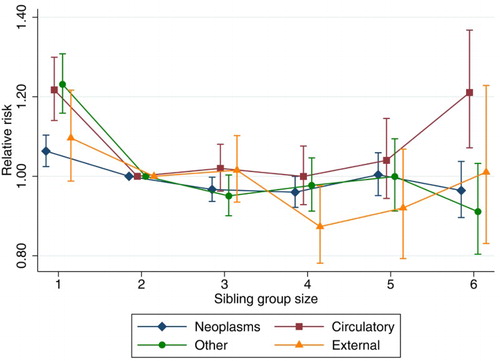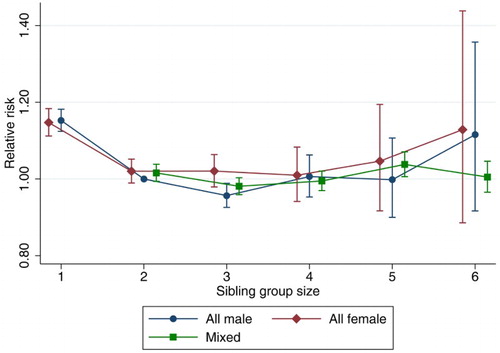Figures & data
Table 1 Descriptive statistics for analysis population of Swedish men and women born 1938–72
Table 2 Distribution of men and women in Sweden across sibling group sizes by cohort (per cent) and infant mortality (number of deaths per 100,000 births)
Table 3 Correlation of twin births with sibling group size according to birth order of twins
Table 4 Results: sibling group size and mortality among Swedish men born 1938–72, based on Gompertz shared frailty hazard model analysis
Figure 1 The relative risk of mortality by sibling group size among men born in Sweden from 1938 to 1972

Table 5 Results: sibling group size and mortality among Swedish women born 1938–72, based on Gompertz shared frailty hazard model analysis
Figure 2 The relative risk of mortality by sibling group size among women born in Sweden from 1938 to 1972

Figure 3 The relative risk of cause-specific mortality by sibling group size among men born in Sweden from 1938 to 1972

Figure 4 The relative risk of cause-specific mortality by sibling group size among women born in Sweden from 1938 to 1972

Figure 5 The relative risk of all-cause mortality by sibling group size according to the sex of siblings, for people born in Sweden from 1938 to 1972

